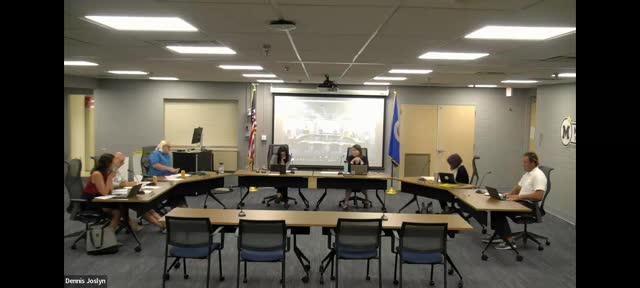School District Faces Enrollment Crisis Amid Rising Class Sizes
September 09, 2024 | MAHTOMEDI PUBLIC SCHOOL DISTRICT, School Boards, Minnesota
This article was created by AI summarizing key points discussed. AI makes mistakes, so for full details and context, please refer to the video of the full meeting. Please report any errors so we can fix them. Report an error »

In a recent government meeting, school officials discussed significant changes to enrollment policies and class sizes at the elementary and secondary levels, driven by unexpected increases in student numbers and staffing challenges.
At the elementary level, the recommendation was made to close enrollment for grades K-5 due to high student numbers. Officials noted that while some resident enrollment may occur throughout the year, the decision aims to manage classroom capacities effectively. The discussion highlighted the importance of sibling preferences in enrollment, ensuring that families with existing students in the district are prioritized.
Transitioning to middle and high school, officials acknowledged the complexities of scheduling and staffing, particularly with shared staff between grades. The middle school has seen fluctuations in class sizes, with some grades experiencing larger classes than others. For instance, the 7th grade has been particularly impacted, with an unexpected influx of new residents leading to a waiting list for enrollment. The average class sizes have increased compared to previous years, raising concerns among parents and educators.
Officials emphasized that while class sizes are larger than in the past, they remain within the metro average. However, the sustainability of these sizes is in question, as the district can no longer rely on federal ESSER funding that previously allowed for smaller class sizes. The conversation also touched on the need for better scheduling strategies to accommodate elective courses and shared staffing, which have added constraints to class arrangements.
The meeting concluded with a commitment to monitor class sizes and explore potential adjustments to scheduling and classroom arrangements to better meet student needs. The closure of open enrollment was confirmed, meaning no new students will be accepted for the current school year, a decision made in light of the unexpected enrollment surge.
At the elementary level, the recommendation was made to close enrollment for grades K-5 due to high student numbers. Officials noted that while some resident enrollment may occur throughout the year, the decision aims to manage classroom capacities effectively. The discussion highlighted the importance of sibling preferences in enrollment, ensuring that families with existing students in the district are prioritized.
Transitioning to middle and high school, officials acknowledged the complexities of scheduling and staffing, particularly with shared staff between grades. The middle school has seen fluctuations in class sizes, with some grades experiencing larger classes than others. For instance, the 7th grade has been particularly impacted, with an unexpected influx of new residents leading to a waiting list for enrollment. The average class sizes have increased compared to previous years, raising concerns among parents and educators.
Officials emphasized that while class sizes are larger than in the past, they remain within the metro average. However, the sustainability of these sizes is in question, as the district can no longer rely on federal ESSER funding that previously allowed for smaller class sizes. The conversation also touched on the need for better scheduling strategies to accommodate elective courses and shared staffing, which have added constraints to class arrangements.
The meeting concluded with a commitment to monitor class sizes and explore potential adjustments to scheduling and classroom arrangements to better meet student needs. The closure of open enrollment was confirmed, meaning no new students will be accepted for the current school year, a decision made in light of the unexpected enrollment surge.
View full meeting
This article is based on a recent meeting—watch the full video and explore the complete transcript for deeper insights into the discussion.
View full meeting
